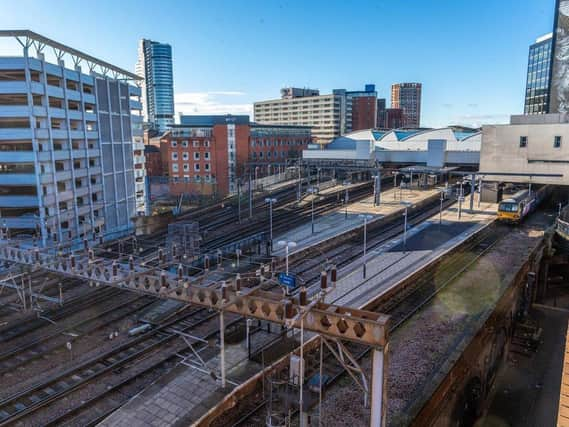VOICES OF THE FUTURE: New transport investment plans isn’t the approach local commuters need


Last week, the Government confirmed plans for a £317 million investment on the York-Leeds-Manchester Transpennine rail route with some of the funding being directed at the new White Rose and Thorpe Park stations. Whilst this is a promising announcement after years of inadequate transport services, the proposals don’t go far enough.
As the Government’s plans have placed an emphasis on city connections, this will help to improve the commuting experiences for city workers across the Pennines, increasing the economic partnerships of Yorkshire cities. Yet, only focusing on city routes, ignores all the local towns and villages surrounding Leeds.
Advertisement
Hide AdAdvertisement
Hide AdIf Leeds is to thrive as a ‘Northern Powerhouse’, it is crucial that its communities on the outskirts are well connected to the city centre, and that transport links across towns are efficient, ensuring that there is a transport system which is fair and works for everyone.
Jack Blanchard, former Political Editor of the Yorkshire Post, said on last week’s BBC ‘Any Questions?’: “I’m afraid it just feels like the same old cycle. It feels a little hollow for so many towns around the North.”
Seaside routes, such as Scarborough, Bridlington and Whitby have particularly poor transport routes into Leeds and many of the surrounding villages are badly cut off, meaning, if commuters don’t have cars, they face really long journeys into Yorkshire’s cities.
As well as this rail infrastructure not reaching many rural communities, there is also the issue of local bus routes. In Leeds, most bus routes aren’t orbital, meaning journeys from one side of Leeds to another will often involve connections within the city centre, adding extra unnecessary waiting times onto journeys. Whilst it is important the outskirts are well connected to the city centre, more emphasis must also be placed on cross-city connections, ensuring that there is enough transport availability for different routes and that journey times are significantly reduced.
Advertisement
Hide AdAdvertisement
Hide AdTo improve the existing situation, Labour MP Angela Eagle has suggested that powers should be handed down to Local councils. “They know what they need, and the treasury ought to be funding it.” This seems like a wise solution, ensuring more power can be handed to local decision makers so that Yorkshire’s transport system is more relevant to the needs of local commuters.
The new West Yorkshire Combined authority, headed by Tracy Brabin, has come some way in improving the local autonomy over transport but there is still more to be done.
As James Lewis, Leader of Leeds City Council, has also pointed out, clarity is still needed on plans for HS2 and how this rail infrastructure will be integrated.
Whilst reduced rail times are welcomed by Leeds residents, too much emphasis seems to be placed on high-speed connections to the capital, reversing the economic development of the North which the government wants to see.